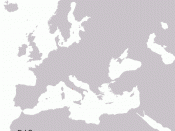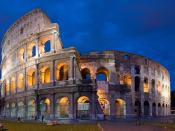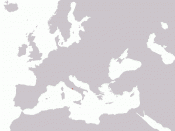Without a doubt the Romans put on the greatest spectacle in the world, known as the Roman Games. These were various types of races and combats with people and animals held all over the Empire. Visitors to Rome tried to attend at least one game because they were amazed. Originally the games took place on religious festivals, but by the late Republic they became more secular. In the time of the kings these games still existed, but they occurred on a much smaller scale and not as often. Between the late Republic and early Empire the games became large scale institutions that were paid for by the government (Nardo, A Travel Guide to Ancient Rome 57). As the games became more popular they were used to cater to people's wants and needs, so the masses would be less likely to protest or rebel. Public officials sponsored distributions of bread to about 150,000 Romans across Rome.
They also spent a lot of money for public festivals, shows, and games (58). Appeasing the masses became knows as "bread and circuses" after a popular humorist said, "There's only two things that concern the masses, bread and circuses" (Nardo, Life in Ancient Rome 65). Thus, in places throughout the Empire, chariot races, gladiatorial combats, and animal fights played a major part in Ancient Roman life.
The chariot races were held at the Circus Maximus, which was one of the most popular tourist sites in the entire Roman Empire. The Circus Maximus was more than one-third of a mile long and 450 feet wide. It took up almost the entire valley between the Palatine and Aventine Hills. It held 150,000 spectators and another 100,000 people could watch from the hillsides. Anyone who was able to find a place was able to attend, including women,


